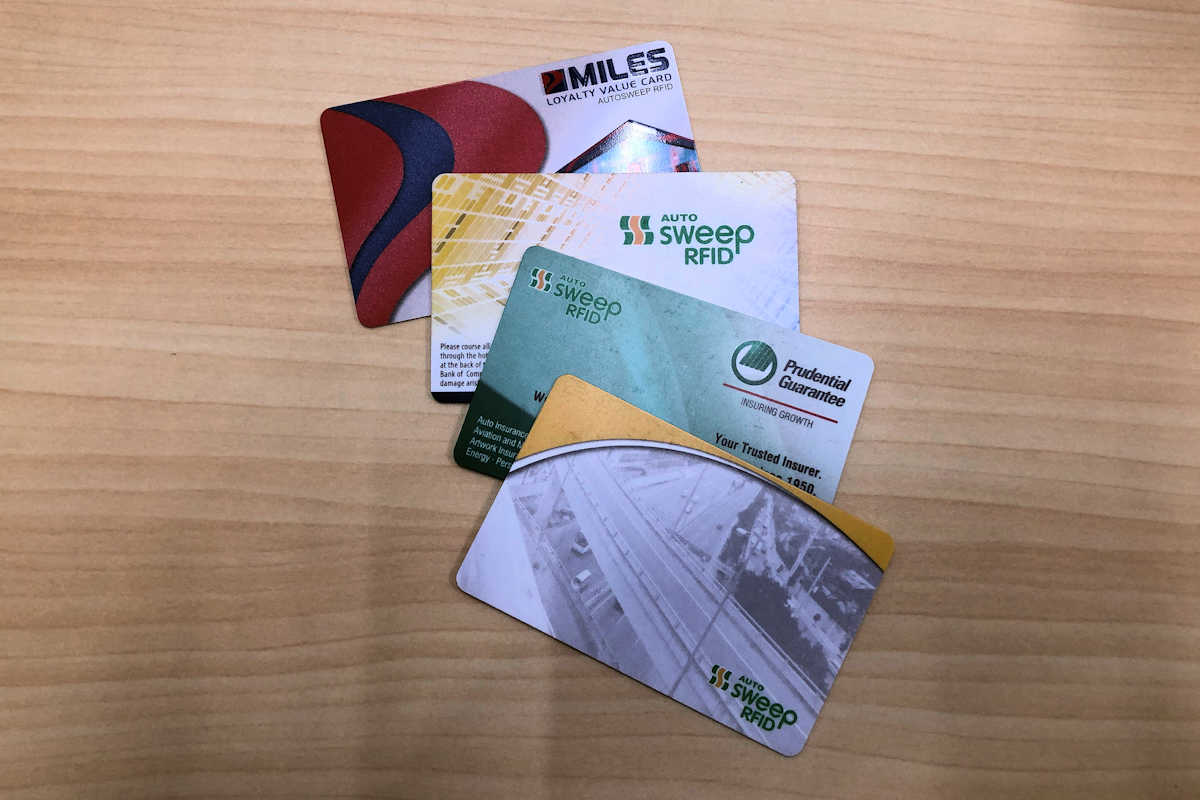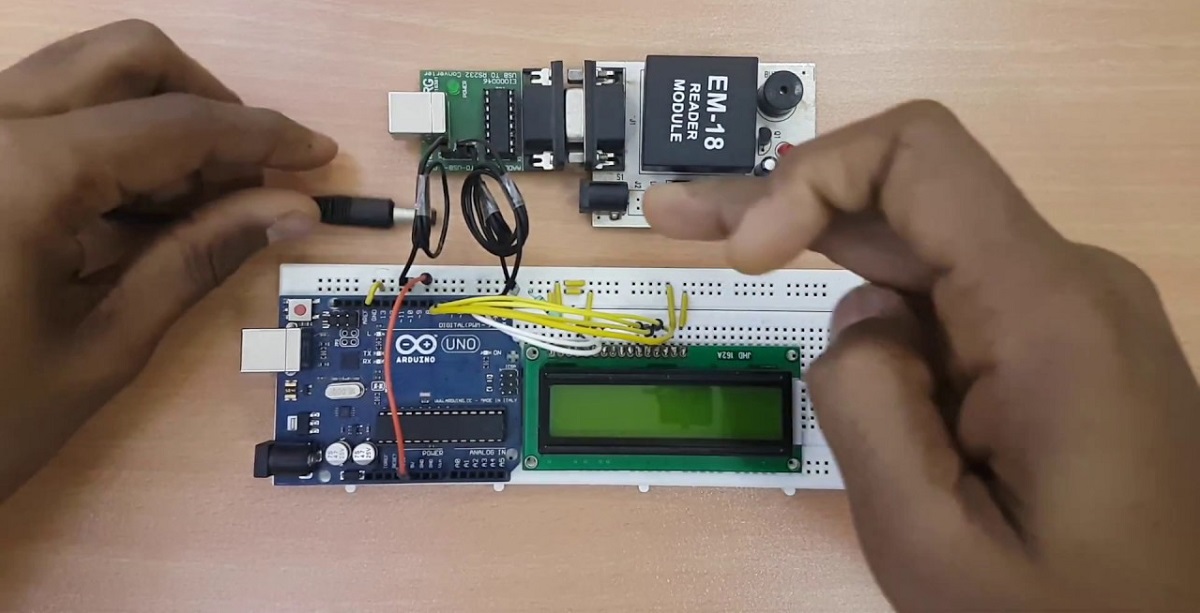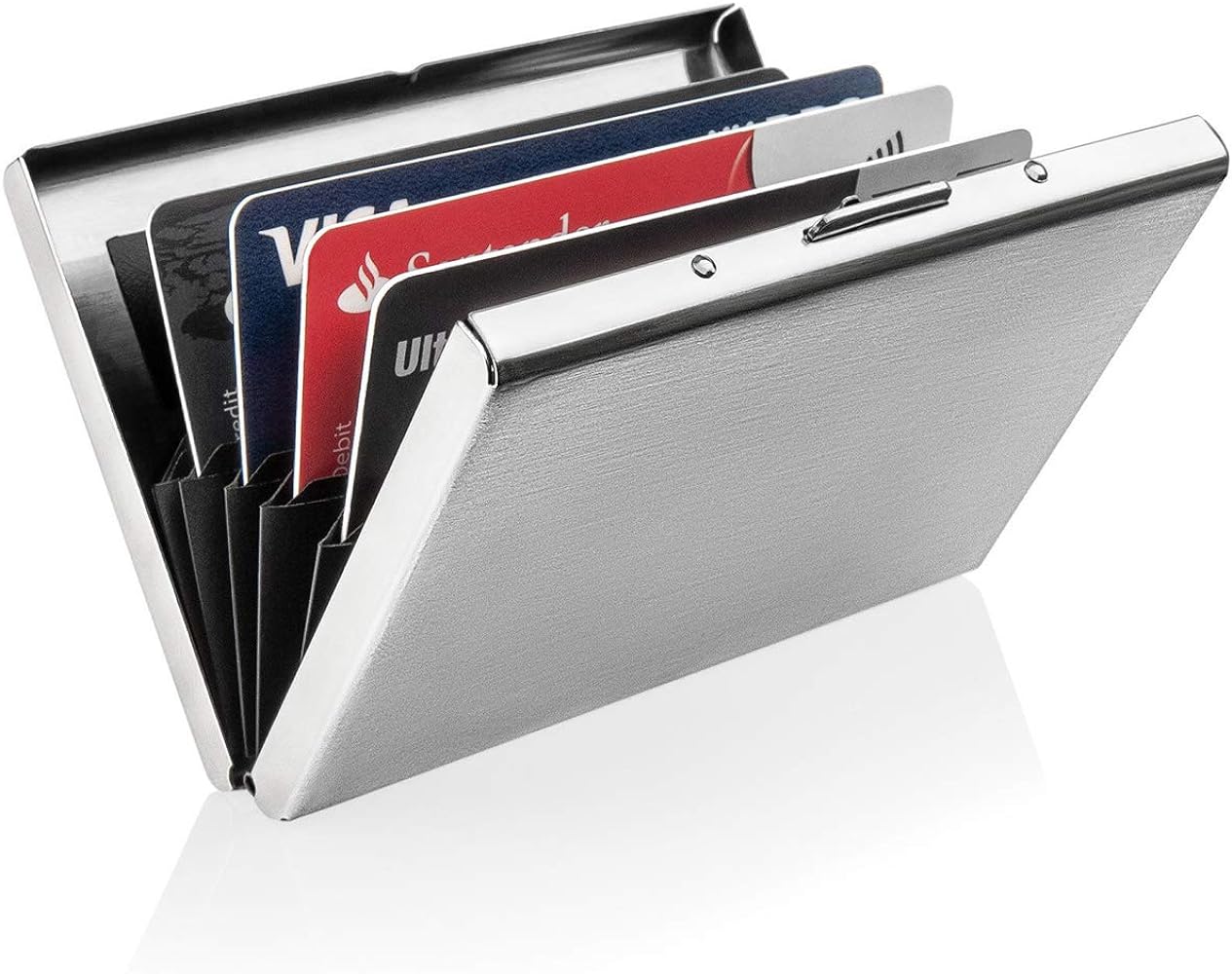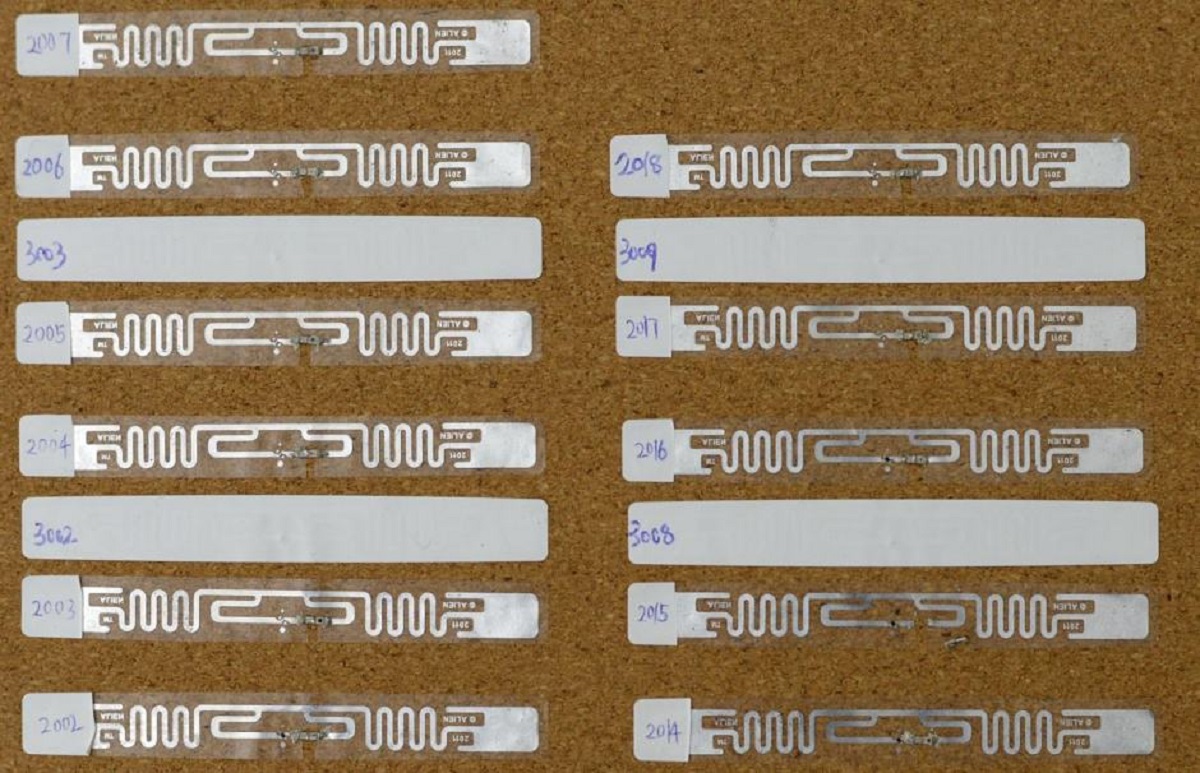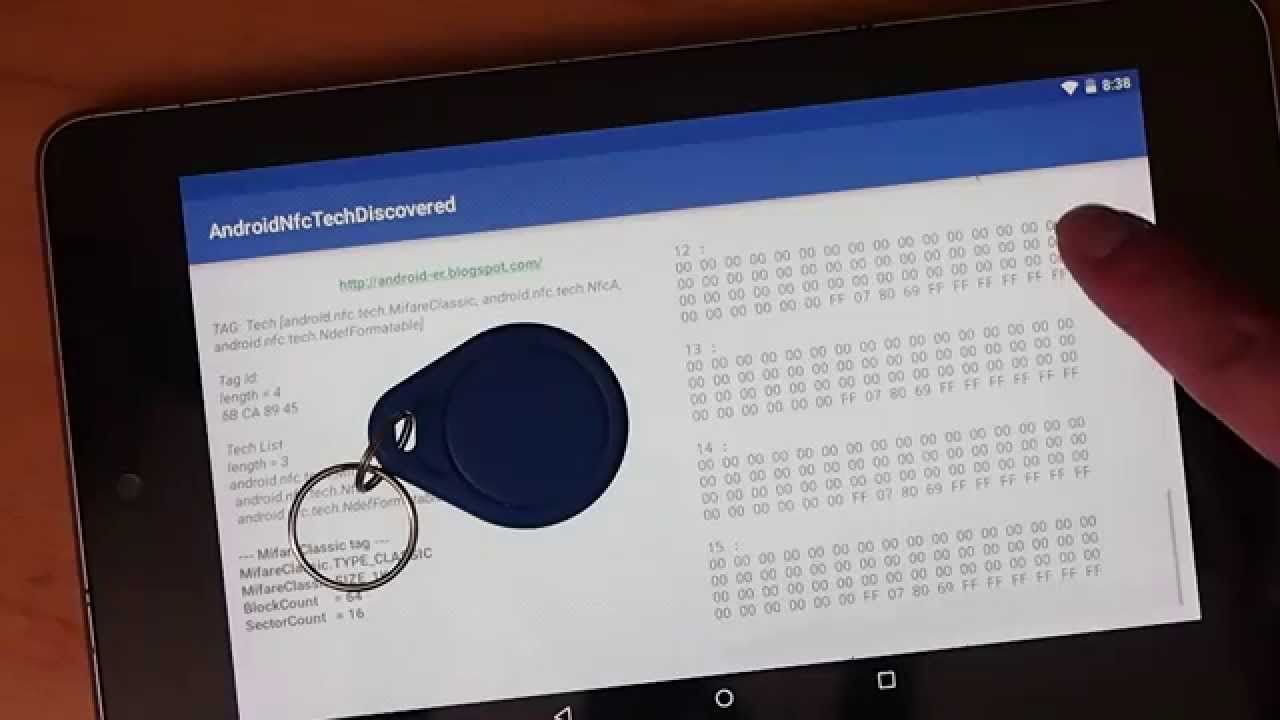Introduction
Welcome to the world of RFID (Radio Frequency Identification) technology – an innovative and sophisticated system that has revolutionized various industries. RFID has gained significant popularity due to its ability to streamline operations, enhance efficiency, and provide seamless tracking and identification capabilities. In this article, we will explore the intricacies of RFID technology and guide you on how to get started with implementing RFID in your business or personal projects.
RFID technology utilizes radio waves to transmit data between a tag, consisting of a microchip and an antenna, and a reader. This wireless communication enables the automatic identification and tracking of objects or individuals, eliminating the need for manual scanning or line-of-sight interactions.
The potential applications of RFID technology are vast and diverse. From inventory management and supply chain optimization to healthcare monitoring and access control, RFID systems have proven to be invaluable in various sectors. Whether you’re a business owner looking to improve operational efficiency or a hobbyist interested in exploring the vast possibilities of RFID, this article will provide you with the guidance and knowledge necessary to embark on your RFID journey.
Throughout this article, we will explore the different types of RFID systems, discuss the benefits and applications of RFID technology, and equip you with the necessary steps to successfully implement an RFID system. We will also provide tips and best practices, troubleshooting advice, and highlight important considerations to ensure a smooth and effective RFID integration. So, let’s dive into the world of RFID and discover how this technology can revolutionize the way you track, identify, and manage information.
What is RFID?
RFID stands for Radio Frequency Identification, which is a technology that utilizes radio waves to transmit data between a tag and a reader. The tag, also known as an RFID transponder or chip, is a small electronic device that consists of a microchip attached to an antenna. This chip stores and transmits information using radio frequency signals.
Unlike barcodes that require line-of-sight scanning, RFID technology allows for efficient and contactless data transfer. When an RFID tag comes into the range of an RFID reader, the reader emits radio waves that power the tag and enable it to transmit its unique identification data. The reader then captures this data, sending it to a computer system for further processing and analysis.
RFID tags can be categorized as either passive or active. Passive RFID tags do not have an internal power source and rely on the energy provided by the RFID reader to transmit data. On the other hand, active RFID tags contain their own power source, allowing for longer read ranges and increased functionality.
One of the key advantages of RFID technology is its ability to enable fast and automated data capture. Unlike traditional barcodes that require line-of-sight scanning, RFID tags can be read from a distance and are capable of simultaneous multiple tag identification. This speed and efficiency make RFID ideal for applications such as inventory management, asset tracking, access control, and supply chain optimization.
Additionally, RFID technology offers improved accuracy and reliability compared to manual data entry or barcode scanning. With RFID, the chance of human error is significantly reduced as data is automatically captured and transmitted. This not only saves time but also reduces the risk of mistakes and enhances overall operational efficiency.
In the next sections, we will delve deeper into how RFID technology works, explore its various applications, and guide you on how to get started with implementing RFID in your own projects or business operations. So, let’s continue our journey to uncover the full potential of RFID technology.
How Does RFID Work?
RFID technology operates on the principle of radio frequency communication between an RFID tag and a reader. When an RFID tag enters the range of an RFID reader, the reader emits radio frequency signals that power the tag and initiate data transmission.
The RFID tag consists of a microchip and an antenna. The microchip stores data, such as the unique identifier of the tag, while the antenna enables communication between the tag and the reader. Some RFID tags are designed as passive tags, which means they do not have an internal power source and rely on the energy emitted by the reader to operate. Active RFID tags, on the other hand, have their own power source, typically a battery, which enables them to have a longer read range and enhanced functionality.
When the RFID tag receives power from the reader, it sends back a signal containing its stored data. This data is captured by the reader, which then communicates it to a computer system for further processing and analysis.
RFID technology operates at different frequencies, including low frequency (LF), high frequency (HF), ultra-high frequency (UHF), and microwave. The specific frequency used depends on the application and desired read range. LF and HF RFID systems are typically used for short-range applications, such as access control or payment systems, while UHF and microwave RFID systems are commonly employed for long-range applications, such as inventory management or supply chain tracking.
The read range of an RFID system can vary depending on factors such as the frequency used, the power of the reader, and the environment in which the system is deployed. Typically, LF and HF RFID systems have shorter read ranges, ranging from a few centimeters to a couple of meters, while UHF and microwave RFID systems can achieve longer read ranges, reaching up to several meters or even tens of meters.
In summary, RFID technology uses radio frequency communication between a tag and a reader to transmit data. The reader powers the tag, which then sends back its stored information. This contactless and automated process allows for fast and efficient data capture, making RFID technology ideal for a wide range of applications.
Benefits of RFID Technology
RFID technology offers numerous advantages and benefits that make it a valuable tool across various industries and applications. Let’s explore some of the key benefits of utilizing RFID technology:
- Automated and Efficient Data Capture: RFID enables fast and automated data capture, eliminating the need for manual scanning or data entry. This results in significant time savings and increased operational efficiency.
- Contactless and Non-Line-of-Sight Operation: Unlike traditional barcode scanning, RFID does not require direct line-of-sight or physical contact with the tag. This enables seamless data capture even in challenging or hard-to-reach environments.
- Simultaneous Multiple Tag Identification: RFID systems have the ability to read multiple tags simultaneously, making it ideal for applications with a large number of tagged items or high-speed identification requirements.
- Improved Accuracy and Reduced Errors: RFID minimizes the risk of human error associated with manual data entry or barcode scanning. Automated data capture ensures accuracy and consistency, leading to more reliable information and reduced operational mistakes.
- Enhanced Inventory Management: With real-time and accurate data capture, RFID technology enables efficient inventory management, including real-time monitoring of stock levels, automatic replenishment, and streamlined stocktaking processes.
- Increased Security and Access Control: RFID systems can be used for secure access control, ensuring that only authorized individuals or items are granted access to restricted areas. This is particularly valuable in applications such as secure facilities, offices, or parking lots.
- Streamlined Supply Chain Operations: RFID technology allows for seamless tracking of goods throughout the supply chain, enabling accurate and timely inventory management, reduced stockouts, improved order accuracy, and better overall supply chain visibility.
These are just a few of the many benefits that RFID technology brings to businesses and organizations. By harnessing the power of RFID, companies can optimize their operations, improve efficiency, reduce costs, and enhance customer satisfaction. In the next sections, we will explore the various applications of RFID technology and guide you on how to get started with implementing RFID in your own projects or business operations.
Applications of RFID Technology
RFID technology has found its way into a wide range of industries and applications, revolutionizing the way businesses operate and providing numerous benefits. Let’s explore some of the key applications of RFID technology:
- Inventory Management: RFID enables accurate and efficient inventory management by providing real-time visibility of stock levels, enabling automated stock replenishment, and streamlining stocktaking processes.
- Supply Chain Optimization: RFID technology allows for seamless tracking of goods throughout the supply chain, enabling better inventory control, reduced stockouts, improved order accuracy, and enhanced supply chain visibility.
- Retail: RFID is widely used in the retail industry, enabling retailers to improve inventory accuracy, reduce stock shrinkage, enhance product availability, and enable faster checkout processes.
- Healthcare: In healthcare settings, RFID technology is utilized for patient and asset tracking, medication management, inventory control, and personnel identification, leading to improved patient safety, enhanced operational efficiency, and better compliance with regulations.
- Access Control and Security: RFID systems are employed for secure access control in various environments, including offices, parking lots, airports, and government facilities, ensuring that only authorized individuals or items are granted access to restricted areas.
- Asset Tracking: RFID tags can be attached to valuable assets, equipment, or vehicles, enabling real-time tracking and monitoring. This helps organizations optimize asset utilization, prevent loss, and streamline maintenance processes.
- Logistics and Transportation: RFID technology is widely used in logistics and transportation for tracking and tracing shipments, improving supply chain visibility, and enhancing overall logistics efficiency.
- Animal Tracking and Agriculture: RFID tags are used for animal identification, tracking livestock movements, managing breeding programs, and tracking the supply chain in the agriculture industry.
These are just a few examples of the vast range of applications where RFID technology has proven to be invaluable. The flexibility, efficiency, and accuracy offered by RFID technology make it a versatile solution that can be adapted to meet the specific needs of various industries and use cases.
In the following sections, we will guide you on how to get started with RFID technology, including selecting the right RFID system, installing and configuring RFID equipment, programming RFID tags, testing the system, and implementing best practices to ensure a successful RFID implementation.
Types of RFID Systems
RFID technology encompasses various types of systems, each with its own characteristics and applications. Let’s explore some of the commonly used RFID system types:
- Passive RFID Systems: Passive RFID systems consist of passive RFID tags that do not have an internal power source. These tags rely on the energy provided by the RFID reader to operate. They are typically less expensive and smaller in size, making them ideal for applications with a large number of tags, such as inventory management or retail item tracking.
- Active RFID Systems: Active RFID systems utilize active RFID tags that have their own internal power source, usually a battery. Active tags can emit a stronger signal and have a longer read range compared to passive tags. They are often used in applications that require longer range tracking, such as asset tracking or personnel monitoring.
- Frequency Bands: RFID technology operates at different frequency bands, including low frequency (LF), high frequency (HF), ultra-high frequency (UHF), and microwave. The frequency band used depends on the specific application requirements, such as desired read range and environmental conditions.
- LF RFID Systems: LF RFID systems operate at a frequency range of 125 kHz to 134 kHz. They provide relatively short read ranges, typically up to a few centimeters. LF systems are commonly used for applications such as access control, animal identification, and vehicle immobilization.
- HF RFID Systems: HF RFID systems operate at a frequency range of 13.56 MHz. They offer a read range of a few centimeters to a few meters, depending on the tag and reader specifications. HF systems are widely used in applications such as contactless payment, ticketing, and industrial automation.
- UHF RFID Systems: UHF RFID systems operate at a frequency range of 860 MHz to 960 MHz. They provide a longer read range compared to LF and HF systems, ranging from a few meters to tens of meters. UHF systems are commonly used in applications such as inventory management, supply chain tracking, and retail item tracking.
- Microwave RFID Systems: Microwave RFID systems operate at a frequency range of 2.45 GHz. They offer a longer read range, typically exceeding 10 meters. Microwave systems are utilized in applications such as toll collection, vehicle tracking, and industrial asset management.
When choosing the right RFID system for your application, it is essential to consider factors such as desired read range, operating environment, tag durability, and integration requirements. Understanding the different types of RFID systems will help you make an informed decision and ensure that you select the most suitable system for your needs.
In the upcoming sections, we will guide you on how to get started with RFID technology, including selecting the right RFID system, installing and configuring RFID equipment, programming RFID tags, testing the system, and implementing best practices to ensure a successful RFID implementation.
How to Get Started with RFID
Are you ready to embark on your RFID journey? In this section, we will guide you through the steps to get started with RFID technology:
- Identify your RFID Goals: Determine the specific goals and objectives you want to achieve with RFID technology. This could be improving inventory management, enhancing supply chain visibility, or streamlining asset tracking. Understanding your goals will help you choose the right RFID system and develop a focused implementation plan.
- Research RFID Technology: Familiarize yourself with the different types of RFID systems, tags, readers, and application requirements. Research industry best practices and case studies to gain a deeper understanding of how RFID technology can benefit your business or project.
- Select the Right RFID System: Based on your goals and application requirements, choose the appropriate RFID system, considering factors such as read range, tag durability, frequency band, and integration capabilities. Consult with RFID experts or vendors to help you make an informed decision.
- Install RFID Equipment: Once you have selected your RFID system, install the necessary equipment, such as RFID readers, antennas, and RFID middleware, following the manufacturer’s guidelines. Ensure proper placement and alignment of the equipment to optimize performance and read accuracy.
- Configure RFID Readers: Configure the RFID readers to suit your application needs. This includes setting the reader parameters, such as read power, read sensitivity, and communication protocols. Consult the reader’s user manual or vendor documentation for detailed instructions.
- Program RFID Tags: Program the RFID tags with the appropriate data and information. This could be a unique identifier, product details, or other relevant data. Utilize RFID programming software or development tools provided by the tag manufacturer to encode the required information onto the tags.
- Test the RFID System: Conduct thorough testing of the RFID system to ensure proper performance and functionality. Test the reading range, tag detection accuracy, and data capture capabilities. Identify and address any issues or inconsistencies that arise during testing.
- Train Personnel: Provide training to personnel who will be working with the RFID system. This includes educating them on the benefits of RFID, explaining how to operate the readers and tags, and guiding them on troubleshooting common issues.
- Implement Best Practices: Implement best practices for RFID system usage, including tag placement, tag orientation, and tag handling procedures. Regularly review and optimize the RFID system to ensure it remains effective and aligned with your goals.
By following these steps, you can successfully start your journey with RFID technology. Remember to continuously monitor and evaluate the system to identify opportunities for improvement and keep abreast of advancements in RFID technology to stay at the forefront of industry trends.
In the next sections, we will provide further guidance on selecting the right RFID system, installing and configuring RFID equipment, programming RFID tags, testing the system, troubleshooting common issues, and implementing best practices for a seamless and efficient RFID implementation.
Choosing the Right RFID System
Selecting the right RFID system is crucial for the success of your RFID implementation. Here are some key factors to consider when choosing an RFID system:
- Application Requirements: Understand your specific application requirements and determine the goals you want to achieve with RFID. Consider factors such as desired read range, read speed, tag durability, and environmental conditions in which the system will be deployed.
- Frequency Band: RFID systems operate at different frequency bands, including low frequency (LF), high frequency (HF), ultra-high frequency (UHF), and microwave. Choose a frequency band that meets your application needs. LF and HF systems are typically used for short-range applications, while UHF and microwave systems offer longer read ranges.
- Read Range: Consider the required read range for your application. The read range varies depending on the frequency used, the power of the RFID reader, and the environment. Evaluate the read range capabilities of different RFID systems and select one that meets your specific needs.
- Tag Compatibility: Ensure that the RFID system is compatible with the RFID tags you plan to use. Different RFID systems support specific tag types and protocols. Verify the compatibility to ensure seamless integration and optimal performance.
- Integration Capabilities: Evaluate the integration capabilities of the RFID system with your existing infrastructure. Consider factors such as compatibility with your software systems, ease of integration with other technologies (such as barcode scanners or IoT devices), and support for relevant communication protocols.
- Scalability: Determine the scalability of the RFID system to accommodate future growth or changes in your business needs. Consider factors such as the ability to add more readers or tags, scalability of the software or middleware, and support for expanding or upgrading the system as needed.
- Vendor Support: Assess the vendor’s reputation, expertise, and customer support. Choose a reliable vendor who can provide technical assistance, training, and ongoing support to ensure a smooth RFID implementation and address any issues or concerns that may arise.
- Cost: Consider the total cost of ownership, including the cost of RFID readers, tags, software, maintenance, and any additional implementation or integration expenses. Balance the upfront costs with the long-term benefits and potential return on investment (ROI) that the RFID system can provide.
By carefully considering these factors, you can select the right RFID system that aligns with your specific application requirements and business goals. Consulting with RFID experts or vendors can also provide valuable insights and guidance in choosing the most suitable RFID system for your needs.
In the upcoming sections, we will provide further guidance on installing and configuring RFID equipment, programming RFID tags, testing the system, troubleshooting common issues, and implementing best practices to ensure a successful RFID implementation.
Installing RFID Equipment
Once you have selected the appropriate RFID system, it’s time to install the RFID equipment. Proper installation is critical for optimal performance and reliable functionality. Follow these steps for successful installation of RFID equipment:
- Planning: Start by carefully planning the placement of RFID readers and antennas. Consider factors such as the read range, coverage area, tag orientation, and potential interference sources. Design a layout that maximizes tag detection and minimizes signal interference.
- Power Supply: Ensure that the RFID reader and associated devices have a reliable power source. Connect the readers to a stable power supply to avoid any disruptions or downtime. Follow the manufacturer’s guidelines for power requirements and electrical connections.
- Mounting: Mount the RFID readers and antennas in their designated locations. Use appropriate mounting brackets or hardware to securely fasten them. Consider the height and angle of the antennas to optimize read performance and coverage.
- Antenna Alignment: Properly align the RFID antennas to ensure optimal tag detection. Align the antennas according to the desired read zone and orientation. Fine-tune the alignment to eliminate blind spots and maximize tag read accuracy.
- Environmental Considerations: Take into account the environmental conditions in which the RFID equipment will be installed. Ensure that the equipment is protected from elements such as temperature extremes, moisture, dust, and electromagnetic interference that may affect its performance.
- Cabling: Install and secure the necessary cabling for connecting the RFID readers, antennas, and other components. Use high-quality cables that are appropriate for the RFID system’s frequency range and adhere to recommended cable lengths to prevent signal loss or degradation.
- Interference Management: Identify and mitigate potential sources of interference that could impact RFID performance. This includes minimizing the presence of metal objects, reflective surfaces, and other RF devices that may interfere with the RFID signals.
- Hardware Integration: Integrate the RFID system with existing hardware components, such as computers, network infrastructure, or IoT devices. Ensure that the necessary interfaces, protocols, and drivers are properly configured to facilitate seamless communication and data transfer.
- Testing: Once the installation is complete, perform thorough testing to verify the functionality of the RFID system. Test tag detection, read range, and data capture accuracy. Identify and address any issues or inconsistencies that arise during testing.
It’s important to follow the manufacturer’s guidelines and recommendations during the installation process. Additionally, consulting with RFID experts or vendors can provide valuable insights and guidance to ensure a successful installation of the RFID equipment.
In the upcoming sections, we will provide further guidance on configuring RFID readers, programming RFID tags, testing the system, troubleshooting common issues, and implementing best practices to ensure a successful RFID implementation.
Configuring RFID Readers
Once the RFID equipment is installed, the next step is to configure the RFID readers to ensure optimal performance and functionality. Follow these steps to successfully configure RFID readers:
- Reader Software: Install the necessary reader software provided by the RFID reader manufacturer. This software will allow you to access and configure the reader settings.
- Connectivity: Ensure that the RFID reader is properly connected to the computer or network. Use the appropriate communication interface, such as USB, Ethernet, or serial, based on the reader’s specifications and your infrastructure requirements.
- Read Zone: Define the desired read zone or read range for the RFID reader. Adjust the power settings and antenna parameters to optimize the read zone and ensure reliable tag detection.
- Read Parameters: Configure the reader settings, such as read power, read sensitivity, and read rate, based on your application requirements. Consider factors such as the type of tags used, the desired read distance, and the presence of potential interference.
- Data Formatting: Determine the format in which the reader will transmit the tag data to the connected system. Configure the data formatting options, including the tag ID format, data delimiters, and special character handling.
- Filtering and Anticollision: Set up filtering and anticollision mechanisms to ensure efficient tag identification in cases where multiple tags may be present in the read zone simultaneously. Adjust the reader settings to minimize interference and maximize tag recognition.
- Integration with Software: If you are integrating the RFID system with existing software applications or databases, configure the reader to transmit the tag data in the appropriate format and protocol required by the software system.
- Testing and Optimization: Thoroughly test the configured RFID reader to validate the settings and ensure proper functionality. Conduct real-world testing to verify tag detection, read accuracy, and system integration. Make necessary adjustments and optimizations as needed.
- Documentation: Document the configuration settings for future reference and troubleshooting purposes. Maintain a record of the reader configurations for each installation to facilitate system maintenance and updates.
It’s essential to refer to the RFID reader manufacturer’s documentation and guidelines during the configuration process. If you encounter any difficulties or require further assistance, reach out to the RFID reader vendor or consult with RFID experts to ensure proper configuration and optimization of your RFID readers.
In the upcoming sections, we will provide further guidance on programming RFID tags, testing the system, troubleshooting common issues, and implementing best practices to ensure a successful RFID implementation.
Programming RFID Tags
Programming RFID tags is a crucial step in implementing an RFID system. Follow these steps to successfully program RFID tags:
- Tag Compatibility: Ensure that the RFID tags you are using are compatible with the RFID reader and programming software you plan to utilize. Different tags may require specific programming methods or protocols.
- Software Setup: Install and configure the RFID tag programming software provided by the tag manufacturer or a third-party software tool. This software will allow you to read, write, and program the data onto the RFID tags.
- Tag Data Format: Determine the data you want to store on the RFID tags. This can include unique identifiers, product information, or any other relevant information for your specific application. Define the data format and structure to ensure consistency and compatibility with your RFID system.
- Encoding Data: Use the tag programming software to encode and program the desired data onto the RFID tags. This may involve entering the data manually or importing it from a database or other sources. The software should provide options for data entry and programming customization.
- Data Validation: Validate the programmed data on the RFID tags to ensure accuracy and completeness. Verify that the encoded data matches the intended information and meets the requirements of your application.
- Bulk Programming: For large-scale deployments, consider using bulk programming techniques or tools that allow for simultaneous data programming on multiple RFID tags. This can save time and improve efficiency when programming a large number of tags.
- Testing: After programming the RFID tags, test their readability and data accuracy using the RFID reader. Verify that the reader can successfully read and interpret the programmed data on the tags. Make any necessary adjustments or corrections if issues arise during testing.
- Documentation: Document the programming details, including the data format, programming method, and any specific instructions or configurations. Maintain a record of the programming process to ensure consistency and facilitate future maintenance or updates.
- Tag Management: Establish a system for managing programmed RFID tags, including inventory control, tracking usage, and ensuring proper storage conditions. Implement processes to track and update the programmed data on the tags as needed.
Programming RFID tags accurately and efficiently is crucial for the smooth operation of your RFID system. Adhere to the tag manufacturer’s guidelines and recommendations, and consult with experts or vendors if you encounter any challenges during the programming process.
In the upcoming sections, we will provide further guidance on testing the RFID system, troubleshooting common issues, implementing best practices, and ensuring a successful RFID implementation.
Testing RFID System
After the installation and configuration of the RFID system, it is important to thoroughly test its functionality and performance. Follow these steps to effectively test your RFID system:
- Tag Detection: Test the RFID reader’s tag detection capabilities by moving RFID tags within the reader’s read range. Verify that the reader can reliably detect and read the programmed data from the tags.
- Read Range: Measure the read range of the RFID system by gradually moving tags away from the reader. Document the maximum distance at which the reader can still accurately read the tags.
- Read Accuracy: Check the accuracy of the read data by comparing it with the programmed information on the RFID tags. Verify that the reader correctly captures and interprets the data without errors or omissions.
- Multi-Tag Scenario: Simulate a multi-tag scenario by placing multiple RFID tags within the reader’s read range. Ensure that the reader can distinguish between multiple tags and capture their data accurately. Address any issues related to tag collisions or interference.
- Varying Environmental Conditions: Test the RFID system’s performance under different environmental conditions to ensure its reliability. Expose the system to factors such as temperature variations, humidity, and electromagnetic interference, and assess its performance throughout these conditions.
- Read Rate: Evaluate the read rate, or the speed at which the RFID system can read and process tagged items. Test the read rate under varying conditions to ensure that the system can handle the desired workload or operational requirements.
- System Integration: Verify the integration of the RFID system with any existing software or database systems. Ensure that the captured data seamlessly integrates into the desired applications and processes without any compatibility or data transfer issues.
- Testing Tools: Utilize RFID testing tools or software provided by the RFID vendor to assess the system’s performance. These tools can help analyze data captured by the readers, track tag movements, and identify any potential issues or areas for improvement.
- Iteration and Optimization: Continuously iterate the testing process, making necessary adjustments and optimizations based on the test results. Address any performance issues or discrepancies to enhance the overall performance and efficiency of the RFID system.
Thoroughly testing your RFID system ensures its reliability and effectiveness for your specific application. Document the testing results and any adjustments made during the process to aid in future troubleshooting and maintenance.
In the following sections, we will provide guidance on troubleshooting common RFID issues, implementing best practices, and ensuring a successful RFID implementation.
Troubleshooting Common RFID Issues
While RFID technology offers numerous benefits, like any technology, it can encounter issues that may impact its performance. Here are some common RFID issues and troubleshooting steps to consider:
- Interference: Interference from other electronic devices or metal objects can disrupt RFID signals. Identify potential sources of interference and minimize their impact by adjusting the reader’s power settings, changing the antenna orientation, or relocating the RFID equipment.
- Tag Placement: Improper tag placement can affect the performance of RFID systems. Ensure that tags are positioned correctly, avoiding obstruction from metal surfaces or liquids that can interfere with the RF signal. Experiment with different tag orientations and locations for optimal read rates.
- Collision and Read Range: In scenarios where multiple tags enter the reader’s read range simultaneously, tag collisions can occur, resulting in incomplete or inaccurate data capture. Implement anti-collision protocols and adjust reader settings to address collisions and optimize the read range for effective tag detection.
- Power and Read Sensitivity: Incorrect power and read sensitivity settings can lead to unreliable tag detection. Verify that the reader’s power settings are appropriate for the targeted read range and consider adjusting the read sensitivity to ensure consistent tag identification.
- Data Transfer Issues: If you experience data transfer issues between the RFID system and your software or database, check for compatibility issues, such as incompatible protocols or formatting. Verify that the reader’s output is correctly configured and that the software communicates effectively with the RFID system.
- Software Integration: Problems may arise when integrating the RFID system with existing software or databases. Check for compatibility issues with communication protocols, data formats, and drivers. Work closely with software providers or RFID experts to resolve integration challenges and ensure smooth data exchange.
- Environmental Factors: Environmental conditions, such as temperature fluctuations or electromagnetic interference, can impact RFID system performance. Monitor and control environmental factors for consistent and reliable operation.
- RFID Reader Malfunctions: In cases where the RFID reader itself malfunctions, check connections, power supply, and configurations. Consult the manufacturer’s documentation or seek support from the vendor for diagnostics and possible solutions.
When troubleshooting RFID issues, refer to the RFID system’s documentation, manufacturer guidelines, and best practices. Consult with RFID experts or vendors for additional assistance or guidance in resolving complex issues that may arise.
In the next section, we will provide key tips and best practices to ensure a successful implementation of RFID technology in various applications and industries.
Best Practices for RFID Implementation
Implementing RFID technology requires careful planning and execution. By following these best practices, you can ensure a successful RFID implementation:
- Thorough Evaluation: Conduct a thorough evaluation of your business processes and identify areas where RFID can bring the most value. Define clear goals and objectives for the RFID implementation to guide your efforts.
- Collaboration and Teamwork: Involve key stakeholders and departments across your organization in the RFID implementation process. Foster open communication, collaboration, and consensus-building to align objectives and ensure smooth adoption.
- Pilot Testing: Conduct pilot tests to evaluate the effectiveness of the RFID system in a real-world setting. Use the results to fine-tune configurations, address issues, and gain user feedback before scaling up the implementation.
- Training and Education: Provide thorough training and education to employees who will be working with the RFID system. Empower them with the knowledge and skills needed to operate the system effectively and address common issues that may arise.
- Data Quality Management: Maintain data accuracy and integrity by implementing proper data management practices. Regularly validate and update data to ensure reliable performance and accurate decision-making based on RFID-generated information.
- Periodic Audits: Conduct periodic audits to assess the performance and effectiveness of the RFID system. Identify areas for improvement, track ROI, and make informed decisions on system optimizations or expansions.
- Continuous Improvement: Embrace a culture of continuous improvement by actively seeking feedback from users, monitoring system performance, and leveraging new advancements in RFID technology to enhance operations and efficiency.
- Vendor and Expert Support: Establish a reliable partnership with experienced RFID vendors and experts. Leverage their expertise, support, and guidance throughout the implementation process and for ongoing system maintenance and optimization.
- Data Privacy and Security: Ensure the privacy and security of RFID data by implementing appropriate measures, such as encryption, access controls, and regular security audits. Comply with relevant regulations and industry standards related to data protection.
- Scalability and Flexibility: Plan for scalability and flexibility as your business grows or changes. Consider future needs and potential expansions when selecting RFID systems and infrastructure to minimize the need for major system overhauls down the line.
By following these best practices, you can maximize the benefits of RFID technology and achieve a successful implementation. Remember to continuously monitor the system, seek feedback from users, and adapt as needed to ensure long-term success and ongoing optimization of your RFID implementation.
Conclusion
RFID technology has revolutionized various industries, offering streamlined operations, improved efficiency, and enhanced tracking capabilities. Throughout this article, we have explored the intricacies of RFID technology, from understanding its principles of operation to selecting the right system, installing the equipment, and programming RFID tags. We have also discussed common issues and best practices for a successful RFID implementation.
By leveraging RFID technology, businesses can optimize their inventory management, enhance supply chain visibility, improve asset tracking, and increase operational efficiency. RFID offers benefits such as automated data capture, contactless operation, simultaneous tag identification, and improved accuracy. It finds applications across a wide range of industries including retail, healthcare, logistics, and access control.
However, it is important to approach RFID implementation with careful planning, thorough testing, and collaboration with key stakeholders. Following best practices such as conducting pilot tests, providing adequate training, and implementing data quality management will lead to a successful and effective RFID implementation.
As you embark on your RFID journey, remember to continually assess the performance of your RFID system, seek opportunities for improvement, and stay abreast of advancements in RFID technology. By doing so, you can drive operational efficiency, enhance tracking capabilities, and achieve your business objectives.
We hope this article has provided valuable insights and guidance for your RFID implementation. If you have any further questions or need assistance, feel free to consult with RFID vendors, experts, or refer to additional resources to support your RFID journey.







